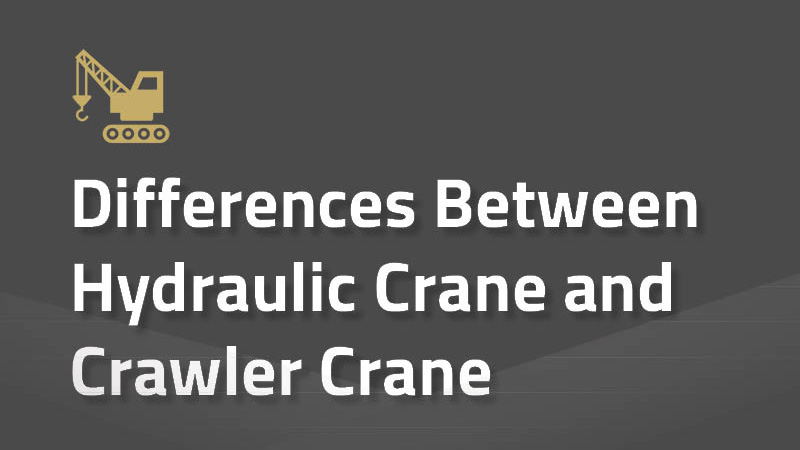
At construction sites, both hydraulic cranes and crawler cranes are used to handle heavy loads and transport materials to different locations. While both types of cranes play crucial roles, they each come with unique features and operational differences. This post aims to shed light on these distinctions so you can make informed decisions based on your project's specific requirements.
- Hydraulic cranes are often mounted on trucks, offering excellent mobility and flexibility. They rely on an internal hydraulic system, which uses hydraulic pumps to generate the power needed to lift extremely heavy loads.
- On the other hand, crawler cranes are built with tracks that allow them to traverse challenging terrains and uneven surfaces. These machines are designed to provide superior stability and support during operations.
- Hydraulic cranes typically feature booms connected to the turntable via hydraulic rams, allowing for precise control over movements. Meanwhile, crawler cranes have a boom that hinges at the base, providing additional reach and flexibility.
- When it comes to application, hydraulic cranes are commonly found at construction sites handling smaller-scale tasks, while crawler cranes are ideal for larger projects, such as those in shipyards or industrial facilities.
- One major advantage of hydraulic cranes is their ease of setup and single-operator operation. Conversely, crawler cranes require a dedicated team to manage the complex machinery effectively.
- In terms of lifting capacity, crawler cranes stand out by being capable of handling weights up to 2,000 tons, whereas hydraulic cranes generally manage loads ranging from 30 to 600 tons.
- While hydraulic cranes excel in versatility and maneuverability, crawler cranes offer unmatched durability and adaptability across diverse environments, including rough terrains and adverse weather conditions.
- Additionally, crawler cranes can operate directly on soft ground due to their wide tracks, preventing sinking under heavy loads. However, this capability comes at a higher cost compared to hydraulic cranes.
In summary, the choice between hydraulic and crawler cranes largely depends on factors like terrain type, project scale, environmental conditions, and budget constraints. For instance, hydraulic cranes are better suited for flat, stable surfaces and smaller projects, whereas crawler cranes shine in rugged settings requiring robust performance.
Conclusion
Ultimately, selecting the appropriate crane involves considering multiple aspects, including site conditions, project specifications, equipment capabilities, and logistical considerations. Whether you need quick deployment or heavy-duty lifting, understanding these differences will help ensure optimal results for your construction efforts.
For example, imagine working on a remote mountainous area where access is limited and the ground is unstable. A crawler crane would likely be the best option given its ability to navigate such challenging landscapes without compromising stability. In contrast, if you're operating within a confined urban environment with paved roads, a hydraulic crane might be preferable due to its compact design and ease of use.
Each type of crane serves distinct purposes and excels in particular scenarios. By evaluating your specific needs against these criteria, you can maximize efficiency and safety throughout your project lifecycle.
Secondary Air Injection Pump,Smog Air Pump For Car,Air Injection Pump,Air Injection System
Suzhou Barjon Auto Parts Co.,Ltd , https://www.cn-barjon.com